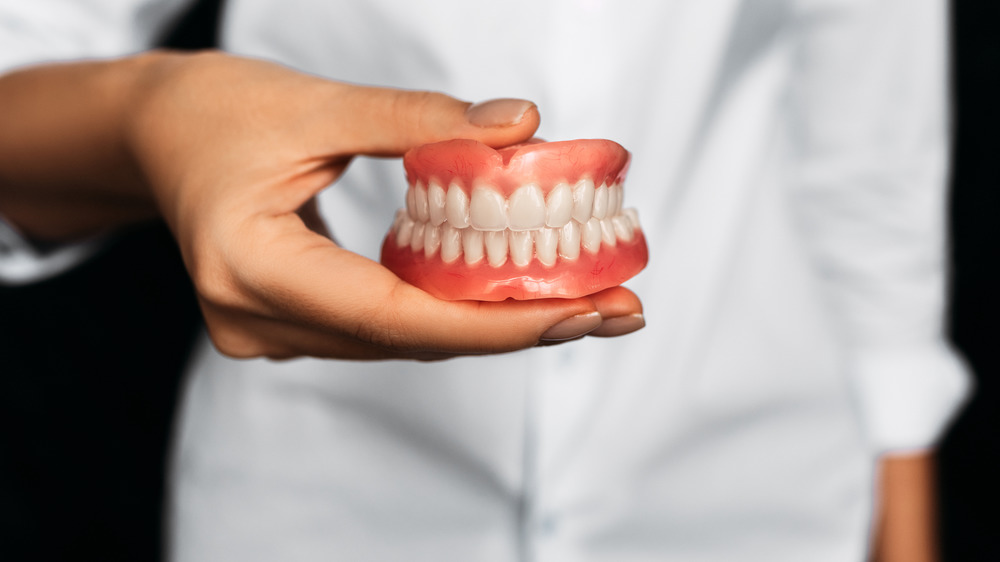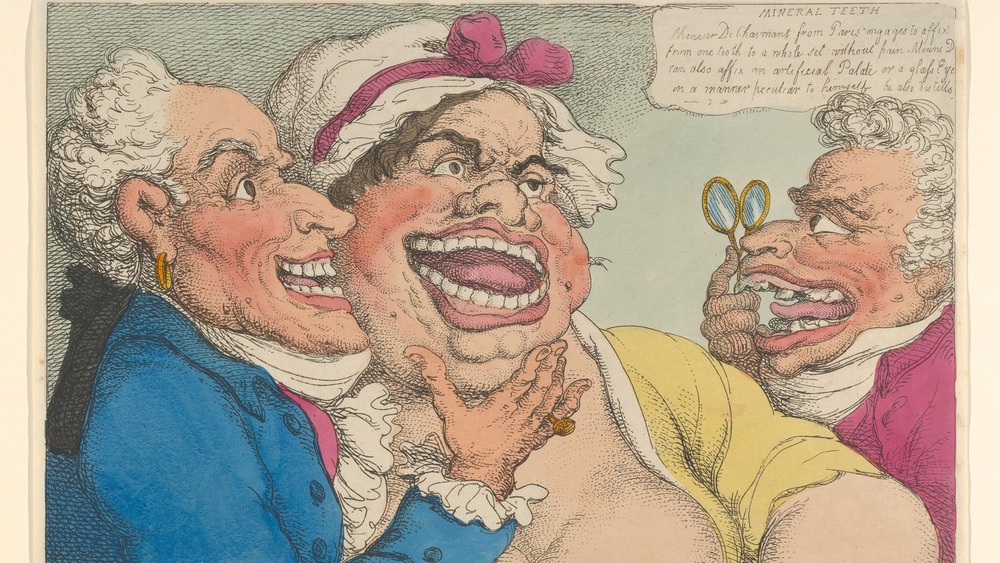The Creepy Source Of Most Teeth In Early Dentures
While dentistry is one of oldest medical professions, dating all the way back to the Indus Valley Civilization in 7000 BCE, most ancient interpretations of the medical practice were fairly barbaric. For much of history, there was little that could be done to prevent tooth problems except pull the offending molar, often without the aid of anesthesia. Tooth decay was prevalent until well into the 20th century, since regular tooth brushing didn't become commonplace until after World War II, per the American Dental Education Association.
By the late 18th century, tooth decay was on the rise among Britain's upper class, largely due to the increasing amount of sugar in their diets. Too many sugary treats and not enough brushing meant rotten teeth.
Wealthy Britons were getting their teeth pulled in record numbers, and the result was a corresponding demand for replacement teeth. At this stage of the science of dentistry, however, dentures were not so much artificial tooth replacements as they were real human teeth, set in ivory and placed in someone else's mouth, according to the BBC. Wealthy people even placed advertisements in papers for human teeth. A 1792 advertisement read: "Wanted — several human front teeth. To prevent unnecessary applications, those only are wanted that are sent from the Continent." Perhaps it's no surprise, however, that there simply were not enough living tooth donors to meet the demand. In the early 19th century, a few entrepreneurial-minded locals realized there was an easier way to get human teeth.
'Waterloo teeth' met the demand for dentures
In the battlefields of Waterloo, Belgium, there were plenty of corpses. According to History, Napoleon's 1815 defeat there at the hands of the English and their allies saw 25,000 French casualties, both dead and wounded, and 23,000 dead or wounded from the allied forces. Tens of thousands of mouths were full of teeth they no longer had any use for. Townspeople, looters, and even other soldiers scavenged the remains of the fallen, pulling out teeth and taking them back to cities, where they sold the wares to eager dentists. These so-called "Waterloo Teeth" were then boiled, shaped into dentures, and sold to the rich and toothless.
The practice of selling teeth to dentists did not begin with Waterloo. Grave robbers were known to pocket human teeth, knowing they could turn them over for a quick profit — the business was "lucrative," says the British Dental Association. George Washington, the Father of Our Country, had dentures which might have included the teeth of slaves, writes Kathryn Gehred at Washington Papers.
The practice of using human teeth in dentures declined around the 1830s, when advances in dentistry led to the incorporation of new materials, like porcelain set in a base of vulcanite (a hard substance made of rubber and sulphur, says the Plastics Historical Society), which was cheaper than ivory, per the BBC. Human teeth, however, were still considered a viable option for dentures well into the mid-19th century.

